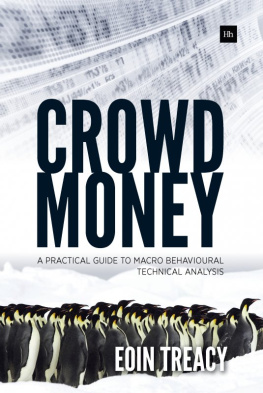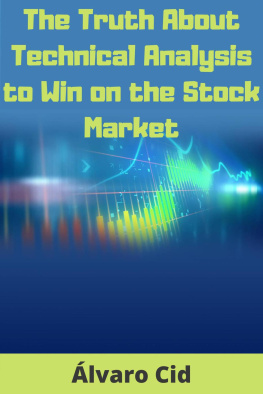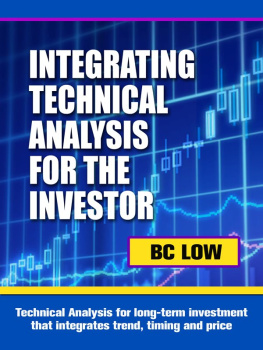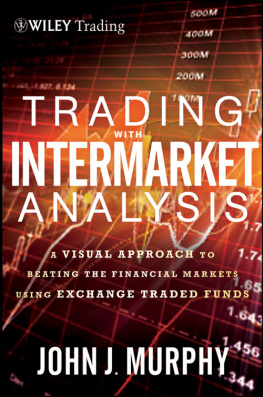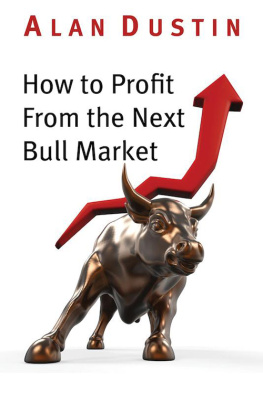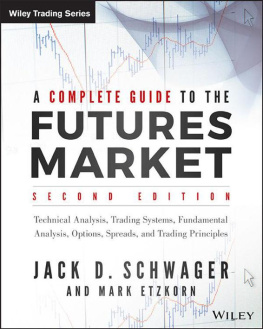To David Fuller, the most generous mentor anyone could ever wish for.
To Lily, Aisling and Fiona for your patience.
To Sam Prather (a retired Silicon Valley high-tech executive) for his tireless support and encouragement.
To FT-Moneys subscribers, to whom this book is dedicated. Thank you for your continued support.
About the Author
Eoin Treacy has spent a decade as a global strategist and partner at Fullermoney.com, where he has represented the service on sell-out speaking tours to the USA, Australia and Singapore. He is an expert in the firms unique macro behavioural approach to financial market interpretation and has appeared on Bloomberg TV, CNBC, CNN, CNBC India, NDTV Profit and the BBC World Service as a commentator on equities, bonds, commodities and currencies.
As well as frequent appearances on Indian financial media, Eoin travels regularly to China to gain first-hand experience of the evolution of its market. He is a world-renowned speaker and has been invited to deliver talks to financially-minded associations in a host of countries, not least for the CFA Institute, the Market Technicians Association, Society of Technical Analysts in the UK and the Australian Technical Analysts Association. He is also a regular presenter at The World Money Show in London and at the Contrary Opinion Forum in Vermont.
Following a degree in Philosophy from Trinity College, Dublin, Eoin went on to spend more than three years at Bloomberg, teaching seminars across Europe on the interpretation of price action. He joined David Fuller at Fullermoney in 2003 to specialise in the services approach to research combining technical, fundamental and behavioural factors. He shares his views on markets in Fullermoneys Comment of the Day on a daily basis and regularly records the services daily audio updates. As an active trader Eoin also details all of his personal trades and investments in the service. Finally, Eoin developed the Fullermoney Chart Library, which is fully customisable and includes more than 17,000 instruments, ratios, spreads and multiples.
In 2013 David Fuller and Eoin Treacy formed FT-Money.com to take their service to the next level and to enhance the product experience for their many subscribers.
Eoin is married and has two daughters. In his spare time he is a keen scuba diver.
Foreword by David Fuller
EOIN TREACY IS one of the best-known financial strategists of his generation. His initial career at Bloomberg, followed by his efficient use of behavioural technical analysis as developed by Fullermoney, has given him a rare insight on global financial markets. Eoin is skilled at monitoring any financial market on a top-down basis.
For instance, with stock markets he starts by categorising developed, emerging and frontier markets on the basis of relative strength or weakness, which he can view in both local currencies as well as any single currency such as the US dollar, for comparative performance. This initial ranking shows him very quickly which markets are in or out of fashion. By viewing them regularly on a systematic basis, he will also know when any market is gaining or losing relative strength.
Thereafter, by utilising Bloombergs comprehensive fundamental data, Eoin can compare markets in terms of valuations, commencing with historic and perspective price earnings ratios, plus dividend yields. When a market appears interesting and he would like to see more fundamental data, he can drill down further by looking at any additional information that is useful for assessment, including comparisons with other markets. And since Fullermoney is an interactive service, Eoin will also have access to research reports and articles from our often-knowledgeable collective of subscribers around the globe.
Good financial research begins with awareness, based on monitoring what markets are actually doing. On a fractal basis, this process can be expanded by looking at the performance of market sectors and then their individual shares of potential interest. It is a disciplined, informative, factual, fascinating and often profitable process.
In writing this introduction to Eoins book, I tip my hat to him because I know how difficult it is to explain a behavioural analytical process without making it sound simplistic and mechanistic. I can assure you that it is not. But how can one explain in detail a methodology based on lifelong observation, especially as it involves thousands of different charts, revealing the moves of share prices, government bonds, commodities and currencies over time?
My answer is that a text book is also a form of introduction, which hopefully sparks your interest and analytical curiosity. Talking about money driven by sentiment is similar to describing the process of falling in love. Each of us knows what that feels like but try explaining it to someone else and it sounds emotional and perhaps even banal. The big trends up and down are all about the crowd falling in love with a market story, which they extrapolate to unrealistic levels, ensuring that they subsequently fall out of love with the same instrument when it no longer performs.
Price charts show us the changing flows of money, driven by events which influence crowd psychology. Monitoring market action on price charts is an efficient analytical process. It also makes sense, because for those of us who hope to understand what markets are doing, how could it not be helpful to actually look at graphic presentations of price trends? To the trained eye, the facts of price action reveal not only money flows but also the changing moods of investors across the panoply of emotions, ranging from uncertainty in choppy markets, to unsustainable euphoria in accelerating uptrends, and panic near the bottom of accelerated declines.
An analytical process based on opinions, without consideration of what price action is revealing, can easily err by telling the market what to do. Yet most of us know as investors that when someone does this, the market seldom cares. Additionally, investors face a daily barrage of financial media explanations, conveniently enabled by events of the day which may be of little influence or even totally unrelated. No wonder people find markets confusing!

